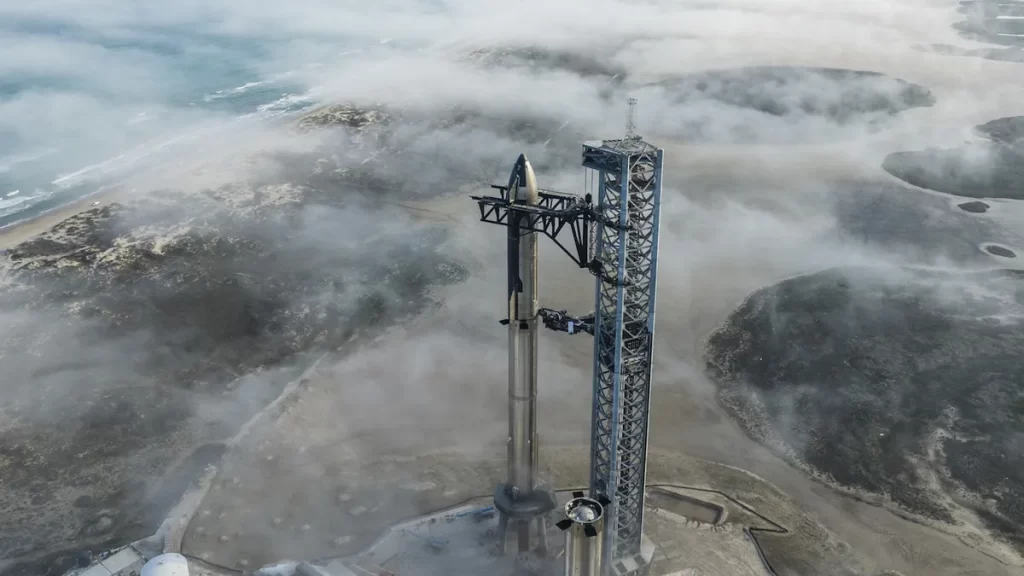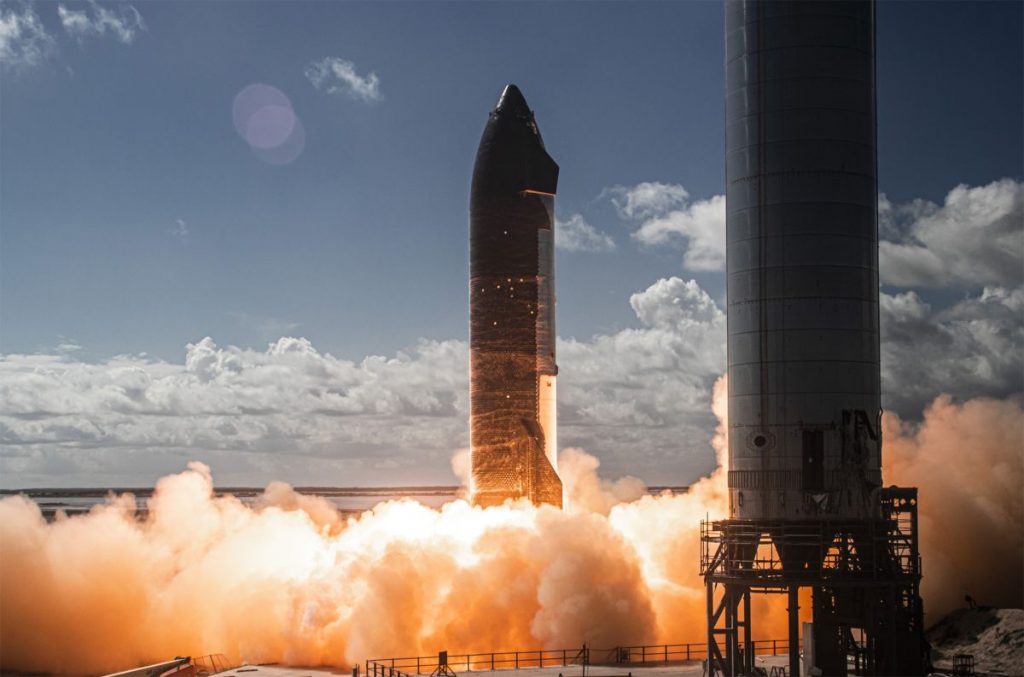SpaceX’s Starship mega-rocket has been making headlines for years as Elon Musk’s private space firm aims to take humans to Mars and beyond. Now, after several successful test flights and a lot of preparation, Starship is finally ready for its first orbital flight test (OFT).
Ship 24, the Starship upper stage prototype, was moved to its launch site in South Texas on April 1. According to reports, the first launch attempt could occur as soon as April 10, pending Federal Aviation Authority approval.

If the launch is successful, SpaceX will have the most powerful operational rocket in the world by far. The company lifted the enormous “Super Heavy” first-stage prototype for its Starship launch system, Booster 7, onto a launch mount at the same site last week. The plan is to stack Ship 23 atop Booster 7 before the first orbital launch attempt.
Despite the hype and excitement around the launch, there are no guarantees. Musk himself recently stated that Starship has a 50 percent chance of reaching orbit on its first attempt. However, even if the rocket doesn’t make it to orbit, the launch will still be an exciting milestone for SpaceX and the space industry as a whole.
In preparation for the launch, technicians at SpaceX’s Starbase launch facility in South Texas have added shielding to the launch mount. This is necessary due to the extreme heat generated by the 33 Raptor engines that power Super Heavy.

Regardless of the outcome, this launch will mark an important moment in the development of SpaceX’s Starship program. The ultimate goal is to make space travel more accessible and to establish a human presence on Mars. With each successful test flight, SpaceX moves closer to realizing that goal.
In conclusion, the Starship mega-rocket is on the cusp of making history with its first orbital flight test. Whether or not it reaches orbit, the launch will be an exciting moment for SpaceX and the space industry as a whole. With each successful test, the company moves closer to making space travel more accessible and achieving its ultimate goal of establishing a human presence on Mars.


